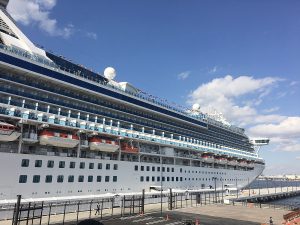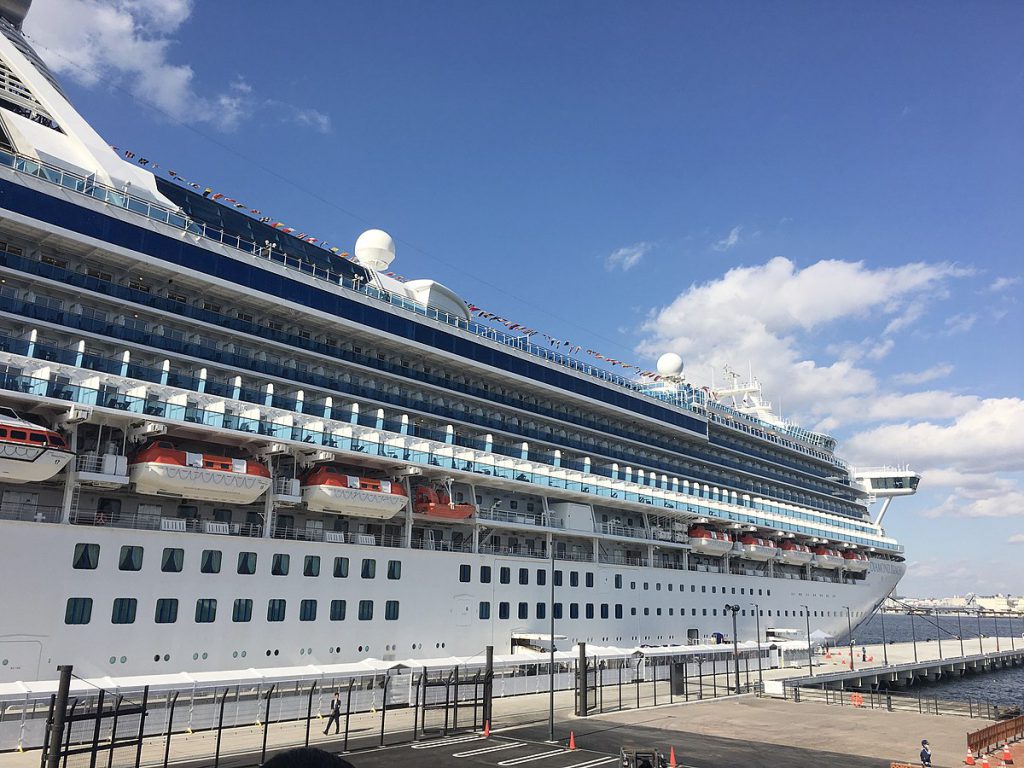 Another chapter in the Diamond Princess story… you can read our last couple of journal club blog posts about the ship here and here. The latest article “Mechanistic Transmission Modeling of COVID-19 on the Diamond Princess Cruise Ship Demonstrates the Importance of Aerosol Transmission” expands this story by modeling the possible routes of transmission of SARS-CoV-2 during the Diamond Princess Cruise. They conclude that aerosol transmission was the most likely dominant mode of transmission during that outbreak. Abstract below:
Another chapter in the Diamond Princess story… you can read our last couple of journal club blog posts about the ship here and here. The latest article “Mechanistic Transmission Modeling of COVID-19 on the Diamond Princess Cruise Ship Demonstrates the Importance of Aerosol Transmission” expands this story by modeling the possible routes of transmission of SARS-CoV-2 during the Diamond Princess Cruise. They conclude that aerosol transmission was the most likely dominant mode of transmission during that outbreak. Abstract below:
Background The current prevailing position is that coronavirus disease 2019 (COVID-19) is transmitted primarily through large respiratory droplets within close proximity (i.e., 1-2 m) of infected individuals. However, quantitative information on the relative importance of specific transmission pathways of the severe acute respiratory syndrome coronavirus 2 (SARS-CoV-2) (i.e., droplets, aerosols, and fomites across short- and long-range distances) remains limited. Methods To evaluate the relative importance of multiple transmission routes for SARS-CoV-2, we leveraged detailed information available from the Diamond Princess Cruise Ship outbreak that occurred in early 2020. We developed a framework that combines stochastic Markov chain and negative exponential dose-response modeling with available empirical data on mechanisms of SARS-CoV-2 dynamics and human behaviors, which informs a modified version of the Reed-Frost epidemic model to predict daily and cumulative daily case counts on the ship. We modeled 21,600 scenarios to generate a matrix of solutions across a full range of assumptions for eight unknown or uncertain epidemic and mechanistic transmission factors, including the magnitude of droplet and aerosol emissions from infected individuals, the infectious dose for deposition of droplets and aerosols to the upper and lower respiratory tracts, and others. Findings A total of 132 model iterations met acceptability criteria (R2 > 0.95 for modeled vs. reported cumulative daily cases and R2 > 0 for daily cases). Analyzing only these successful model iterations yields insights into the likely values for uncertain parameters and quantifies the likely contributions of each defined mode of transmission. Mean estimates of the contributions of short-range, long-range, and fomite transmission modes to infected cases aboard the ship across the entire simulation time period were 35%, 35%, and 30%, respectively. Mean estimates of the contributions of large respiratory droplets and small respiratory aerosols were 41% and 59%. Short-range transmission was the dominant mode after passenger quarantine began, albeit due primarily to aerosol transmission, not droplets. Interpretation Our results demonstrate that aerosol inhalation was likely the dominant contributor to COVID-19 transmission among passengers aboard the Diamond Princess Cruise Ship. Moreover, close-range and long-range transmission likely contributed similarly to disease progression aboard the ship, with fomite transmission playing a smaller role. The passenger quarantine also affected the importance of each mode, demonstrating the impacts of the interventions. Although cruise ships represent unique built environments with high ventilation rates and no air recirculation, these findings underscore the importance of implementing public health measures that target the control of inhalation of aerosols in addition to ongoing measures targeting control of large droplet and fomite transmission, not only aboard cruise ships but in other indoor environments as well.
